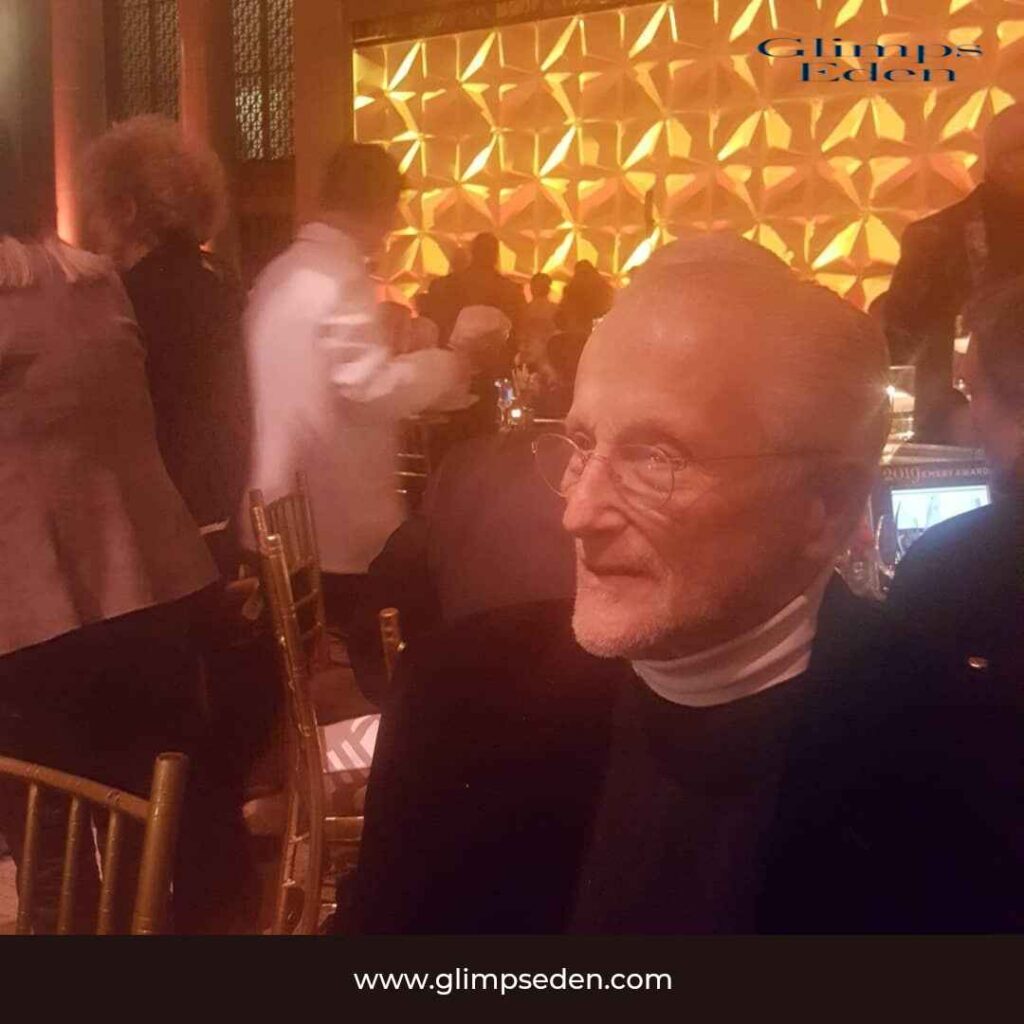In the ever-evolving world of fashion, few names resonate with the same enduring influence as Stan Herman. At 95, this living legend continues to shape the industry he’s helped define for over seven decades. From revolutionizing ready-to-wear collections to transforming the landscape of television shopping, Herman’s impact on fashion is immeasurable.
Let’s dive into the extraordinary life and career of Stan Herman, exploring how his creativity and innovation have left an indelible mark on the fashion world.
The Man Behind the Designs
Early Life and Influences

Stan Herman’s journey into the world of fashion began in the vibrant streets of New Jersey. Born in 1922, Herman grew up surrounded by the hustle and bustle of a changing America. His father, a dressmaker, unknowingly planted the seeds of fashion in young Stan’s mind.
Fun Fact: Herman’s first brush with design came when he was just a teenager, sketching dresses for his high school classmates.
The post-war era of the 1940s and 1950s, with its dramatic shift in fashion trends, profoundly influenced Herman’s aesthetic. The transition from wartime utility to peacetime exuberance in clothing design fascinated the young Herman, shaping his future approach to fashion.
You might also like All About Blackout 2024
Education and Entry into Fashion
Herman’s formal education in fashion kicked off at the Parsons School of Design. Here, he honed his skills and developed the keen eye for style that would become his trademark. At Parsons, Herman was exposed to a wide range of design disciplines, from textiles to illustration, which would later inform his holistic approach to fashion.
After graduation, Herman quickly made waves in the industry. His first big break came when he started designing for Mr. Mort, a label known for its youthful, trendy designs. This experience allowed Herman to experiment with bold colors and patterns, setting the stage for his future innovations.
You might also like Avengers: Doomsday – Release Date
Herman’s Design Philosophy
At the core of Stan Herman’s success lies a simple yet powerful philosophy:
“Fashion should be accessible, comfortable, and make people feel good about themselves.”
This ethos has guided Herman throughout his career, from high-end runways to everyday wear. He believes that clothing should enhance, not overshadow, the wearer’s personality. This consumer-centric approach would become a hallmark of Herman’s designs, setting him apart in an industry often criticized for prioritizing aesthetics over practicality.
Revolutionizing the Fashion Industry
Pioneering Ready-to-Wear Collections

In the 1960s, when haute couture still dominated, Herman saw an opportunity. He pioneered ready-to-wear collections that brought high fashion to the masses. This move democratized style, making it accessible to a broader audience.
Herman’s ready-to-wear designs were characterized by:
- Versatile mix-and-match pieces
- Affordable yet high-quality fabrics
- Styles that could transition from day to evening wear
This approach resonated with the changing lifestyle of American women, who were increasingly entering the workforce and seeking practical yet stylish clothing options.
You might also like Miss Alabama Pageant Winner
Transforming Corporate Uniforms
Herman didn’t stop at everyday fashion. He revolutionized corporate uniforms, turning bland workwear into stylish attire. His designs for companies like TWA, United Airlines, and FedEx transformed how we view work clothes.
| Company | Year | Herman’s Innovation |
| TWA | 1975 | Introduced color-blocked uniforms |
| United Airlines | 1980 | Created versatile mix-and-match pieces |
| FedEx | 1985 | Designed weather-adaptive uniforms |
Herman’s approach to corporate uniforms was groundbreaking. He understood that uniforms were not just about identifying employees but also about boosting morale and projecting a company’s image. His designs incorporated:
- Ergonomic considerations for comfort during long shifts
- Durable fabrics that could withstand frequent washing
- Style elements that made employees feel proud to wear their uniforms
This innovative approach to corporate wear influenced how companies viewed their employee attire, leading to a broader trend of more stylish and comfortable work uniforms across industries.
Innovations in Loungewear and Sleepwear
Stan Herman’s influence extended into our homes. His loungewear and sleepwear designs brought comfort and style to everyday life. He popularized the idea that what we wear at home matters just as much as our public attire.
Key innovations in Herman’s loungewear designs included:
- Use of soft, breathable fabrics for all-day comfort
- Incorporation of fashion-forward elements into traditionally plain items
- Creation of pieces that could transition from loungewear to casual outerwear
Herman’s loungewear designs coincided with a cultural shift towards more casual, comfortable clothing. His pieces allowed people to feel put-together and stylish even in the comfort of their own homes.
You might also like Is Average Joe a True Story?
The QVC Phenomenon
Herman’s Introduction to Home Shopping

In 1993, Stan Herman embarked on a new adventure: designing for QVC. This move would redefine his career and change the face of home shopping. Herman saw the potential of television as a medium to connect directly with consumers, bringing his designs into millions of homes across America.
Building a Fashion Empire on Television
Over three decades, Herman has sold millions of pieces on QVC. His ability to create fashionable, comfortable clothing at affordable prices resonated with viewers across America.
Key Stat: Stan Herman’s QVC lines have generated over $1 billion in sales since 1993.
Herman’s success on QVC can be attributed to several factors:
- His understanding of the average American consumer’s needs and preferences
- The ability to explain his designs in an accessible, engaging manner
- A knack for creating versatile pieces that appeal to a wide range of body types and ages
Impact on Democratizing Fashion
Herman’s QVC success further cemented his commitment to making fashion accessible. He brought designer-quality clothing into homes across the country, proving that style doesn’t have to come with a hefty price tag.
This democratization of fashion had far-reaching effects:
- It challenged the notion that designer clothing was only for the elite
- It empowered consumers to make informed fashion choices from the comfort of their homes
- It paved the way for other designers to explore direct-to-consumer sales channels
You might also like Is jesse lally new relationship After Michelle Saniei Split
Beyond the Runway: Herman’s Multifaceted Career
Presidency of the Council of Fashion Designers of America (CFDA)

From 1991 to 2006, Stan Herman served as the president of the CFDA. During his tenure, he:
- Elevated the status of American fashion globally
- Championed emerging designers
- Established the CFDA/Vogue Fashion Fund
Herman’s leadership of the CFDA was transformative. He worked tirelessly to promote American fashion on the global stage, organizing international showcases and fostering relationships with fashion weeks around the world.
The CFDA/Vogue Fashion Fund, established under Herman’s leadership, has been instrumental in launching the careers of numerous successful designers, including:
- Alexander Wang
- Proenza Schouler
- Rodarte
Mentorship and Nurturing New Talent
Herman’s influence extends beyond his own designs. He’s been a tireless mentor to upcoming designers, sharing his wisdom and experience.
Case Study: Designer Zac Posen credits Herman’s guidance as crucial to his early success in the industry. Herman advised Posen on navigating the business side of fashion, helping him balance creativity with commercial viability.
Herman’s approach to mentorship includes:
- Encouraging designers to develop a unique voice
- Teaching the importance of understanding market trends
- Emphasizing the business aspects of running a fashion label
Contributions to Theater Costume Design
Few know that Herman’s talents also graced the theater world. His costume designs for Broadway shows added another dimension to his creative repertoire. Notable productions featuring Herman’s costume designs include:
- “Ballroom” (1978)
- “La Cage aux Folles” (1983 revival)
Herman’s theater work allowed him to explore more fantastical and elaborate designs, influencing his approach to everyday fashion. The theatrical flair he brought to his runway collections can be traced back to these experiences in costume design.
Awards and Accolades
Notable Industry Recognitions
Stan Herman’s contributions to fashion have not gone unnoticed. His accolades include:
- Coty Award (1974)
- CFDA Lifetime Achievement Award (2013)
- FIT Lifetime Achievement Award (2017)
These awards recognize not just Herman’s design prowess, but also his lasting impact on the fashion industry as a whole. The Coty Award, in particular, was a pivotal moment in Herman’s career, cementing his status as a leading American designer.
Cultural Impact Assessments
Herman’s influence extends beyond fashion circles. His work has been recognized for its cultural significance, with pieces featured in museum collections worldwide. Notable exhibitions include:
- “American Style and Spirit” at the Detroit Institute of Arts (2016)
- “Fashion Unraveled” at the Museum at FIT (2018)
These exhibitions highlight Herman’s role in shaping American fashion identity and his innovative approach to design.
Stan Herman at 95: Still Innovating
Recent Projects and Collaborations
Even at 95, Stan Herman shows no signs of slowing down. Recent years have seen him:
- Collaborate with sustainable fashion brands
- Launch a retrospective collection celebrating his career
- Consult on innovative textile technologies
Herman’s collaboration with eco-friendly brand Reformation in 2022 showcased his commitment to sustainable fashion. The capsule collection featured updated versions of his iconic designs using recycled materials.
Adapting to Digital Age Fashion
Herman has embraced the digital revolution in fashion. He’s active on social media, engaging with a new generation of fashion enthusiasts and sharing his timeless wisdom. His Instagram account, managed with the help of his team, provides insights into his design process and reflections on his long career.
Perspectives on Sustainable and Inclusive Fashion
Always ahead of the curve, Herman has become a vocal advocate for sustainability and inclusivity in fashion. He’s pushing for:
- Eco-friendly materials
- Size-inclusive designs
- Ethical production practices
Herman believes that the future of fashion lies in responsible production and consumption. He’s been working with textile innovators to develop sustainable fabrics that don’t compromise on quality or style.
The Herman Effect: Lessons for Aspiring Designers
Embracing Change and Technology
Stan Herman’s career teaches us the importance of adaptability. From ready-to-wear to QVC to digital platforms, he’s always been at the forefront of industry shifts.
Key lessons from Herman’s approach to change:
- Stay curious about new technologies and their potential applications in fashion
- Be willing to take calculated risks on new platforms or business models
- Never stop learning and evolving your craft
Balancing Creativity with Commercial Viability
Herman’s success lies in his ability to create designs that are both innovative and marketable. This balance is a crucial lesson for aspiring designers. Herman advises young designers to:
- Understand their target market deeply
- Create designs that solve real problems for consumers
- Never compromise on quality, even when designing for mass markets
The Importance of Reinvention and Longevity
At 95, Stan Herman embodies the idea that creativity knows no age limit. His career proves that continuous reinvention is key to staying relevant in fashion.
Herman’s tips for longevity in the fashion industry:
- Stay connected with younger generations to understand evolving tastes
- Be open to collaboration and new perspectives
- Maintain a strong personal brand while being flexible in your approach
Stan’s New Chapter: Life in the Hamptons
Relocation and Community Involvement

In recent years, Herman has made the Hamptons his home. Here, he’s found a new community and fresh inspiration. The coastal environment has influenced his recent designs, with a focus on relaxed, elegant styles suitable for beach living.
Herman has become an active member of the Hamptons community, participating in local fashion events and supporting arts initiatives.
Continued Creative Pursuits
Far from retirement, Herman continues to sketch, design, and collaborate. His Hamptons studio is a hub of creativity and innovation. Recent projects include:
- A line of sustainable beach accessories
- Collaboration with local artisans on handcrafted fashion pieces
- Mentoring programs for young designers in the area
Reflections on a Life in Fashion
“Fashion is not just about clothes. It’s about how we live, how we express ourselves, and how we connect with the world around us.” – Stan Herman
This quote encapsulates Herman’s holistic view of fashion as an integral part of culture and personal expression. His reflections on his long career offer valuable insights into the evolving role of fashion in society.
Looking Ahead: Herman’s Vision for Fashion’s Future
Predictions for Industry Trends
Drawing from his vast experience, Herman foresees:
- A return to quality over quantity
- Increased focus on personalized fashion
- The rise of tech-integrated clothing
Herman believes that the future of fashion lies in sustainable, personalized pieces that integrate seamlessly with technology. He envisions clothes that adapt to the wearer’s needs, from temperature regulation to mood enhancement.
Advice for the Next Generation of Designers
Herman’s advice to young designers:
- Stay true to your vision
- Embrace new technologies
- Never stop learning and evolving
He emphasizes the importance of understanding the business side of fashion alongside creative development. Herman believes that successful designers of the future will need to be as savvy with marketing and finance as they are with fabric and form.
Personal Goals and Upcoming Projects
Even at 95, Stan Herman has his sights set on the future. He’s working on:
- A comprehensive biography documenting his life in fashion
- A documentary about his career and impact on the industry
- Collaborations with tech companies on smart fabrics and wearable technology
These projects reflect Herman’s ongoing commitment to innovation and his desire to share his wealth of knowledge with future generations.
FAQ: Unraveling the Stan Herman Tapestry
- What sparked Herman’s initial interest in fashion? His father’s work as a dressmaker and the vibrant fashion scene of mid-20th century New York.
- How did Herman’s designs for QVC evolve over three decades? From simple basics to trendy, versatile pieces that adapt to changing consumer needs and fashion trends.
- What’s Herman’s secret to staying relevant in a fast-changing industry? Continuous learning, embracing new technologies, and always keeping the consumer’s needs in mind.
- How has Herman’s approach to design changed with age? It’s become more focused on comfort and functionality while maintaining style and innovation.
- What does Herman consider his greatest contribution to fashion? Democratizing style and making quality fashion accessible to everyone.
Conclusion: The Enduring Influence of a Fashion Icon
Stan Herman’s journey through the fashion world is a testament to the power of creativity, adaptability, and vision. From revolutionizing ready-to-wear to transforming television shopping, his influence has shaped the industry for over seven decades.
As we look to the future of fashion, Stan Herman’s legacy reminds us that true style is timeless, innovation is ageless, and the best designs always put the wearer first. His story isn’t just about fashion—it’s about the enduring power of passion, creativity, and the courage to keep reinventing oneself.
At 95, Stan Herman isn’t just a fashion icon; he’s a living legend whose influence will continue to inspire generations of designers to come. His career serves as a blueprint for success in an industry known for its fickleness, proving that with vision, adaptability, and a deep understanding of consumers, one can create a lasting impact in the world of fashion.